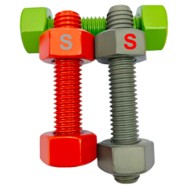
Interpreting fashion scales sometimes resembles solving a hidden riddle
- Observing your bodily proportions begins correct selection
- Get correct chest, waist and hip stats to pick the right size
- Look up the producer's size map before selecting
Say no to trusting number labels alone; they vary widely Rather, measure yourself and verify with the size map. Discovering wardrobe identity is an individual experiment.
Unveiling the mystery behind size guides
Measurement mismatches create widespread shopper frustration. Interpreting measurement charts sometimes resembles a tough puzzle, because sizing norms change between suppliers. Still, simple knowledge and tools let you overcome sizing puzzles.
- Primary step: identify whether the brand follows US, EU, UK or Asian norms. Often these include US, UK, European and Asian formats.
- Following that, check bust, waist, hip and inseam entries carefully. Contrast the listed dimensions with your own stats.
- Finally, check the seller's tips and fit notes to refine your pick. Those guides often include practical notes, alterations and tips.
Navigating perfect fit choices while you shop
The landscape of clothing scales may leave buyers puzzled. Brands differ so standard labels like medium can shift meaning. Variability reflects the individual measurement rules of each company. Consequently first take careful measurements of your body. Use a tape to capture your chest, midriff and hip numbers. Avoid relying purely on your customary size label. A single brand's styles often affect how true a size runs. Determining the best fit is a process of trial and adjustment.

Weighing standard sizing against custom solutions
Choosing dimensions for fixtures often requires standard or custom picks. Pros and cons exist for both standard and custom paths. Stock sizing gives ease and often a lighter price tag. Tailored measurements serve odd shapes or particular use cases best
- Assess your priorities and set a budget before deciding
- Obtain accurate size figures for room or body before ordering
- Check out producers and their options to make an informed pick
Ultimately the suitable measurement varies with your circumstances.
Conquering the art of converting sizes worldwide
Converting across international and brand scales may be challenging. Luckily, charts and calculators simplify cross-system translation. Kick off by recognizing standard clothes and footwear size systems. Employ conversion guides to compare across size schemes. Keep in mind that your shape and build change the best fit. Look at customer notes and testimonials about how items run.
Finding the right fit without the fuss
Sifting through sizing systems can be overwhelming. Retailers frequently apply their own fit templates, nonetheless this roadmap will equip you to interpret size info.
- Initial step: measure carefully using a flexible measuring tape
- Then compare those numbers to the sizing chart provided
- Remember physique as shape impacts how clothes drape
In the end, trying items on gives the clearest sense of fit.
A detailed compendium of standard sizes for all genders
Size charts perplex many, especially with online purchases. So we compiled a wide reference for standard men's and women's sizes. For trousers, shirts or dresses this resource helps find the fit.
- Primarily, be aware sizing shifts between labels and territories
- Subsequently, capture waist, hips, bust and chest numbers correctly
- Ultimately, pick the higher size when caught between measures
Employing these guidelines builds confidence in interpreting size tables. Wishing you great shopping success!

A straightforward guide to kids' clothing measurements
Identifying the right fit for children may feel tough. Kids' rapid growth means sizes alter in short order. Always check the brand's size chart instead of relying on age alone. Measure child's chest, waist and height to pick correct sizeMeasuring bust, waist and hips for accurate sizing
To make clothes fit properly you must measure your body accurately. Use a soft measuring tape and a helper for best accuracy. Stand tall but relaxed with feet separated and shoulders soft
A guide to interpreting XS, S, M, L, XL and XXL
Contemporary size systems can be confusing and inconsistent. Across brands inconsistency in sizing frequently occurs. Inspecting size ranges reveals how labels map to measurements. Let's explore what the letters and numbers mean in practice!
Celebrating body size inclusivity

Size inclusion is about valuing every body and its differences. This involves rejecting narratives that demand one ideal shape. Together we can create spaces that foster body comfort and pride.
- Opt for daily practices that reinforce body love Choose body positivity and self-acceptance every day Commit daily Standard Size to encouraging body acceptance and love Prefer actions that cultivate self-acceptance and respect
- Never forget that charm comes in many silhouettes and scales
- Challenge media and messages that endorse restrictive standards
- Decide each day to celebrate body kindness and positive views
